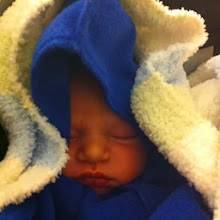 | ||
| From First weeks at Agahozo Shalom Have you ever noticed how much water it takes to flush a toilet? How about to wash the dishes? It wasn’t until I had to carry all of the water I wanted to use for the day in a bucket on my head that I realized just how precious water is. “Amazi,” Kinyarwanda for water, might be the most important word at Agahozo Shalom. Though running water is in the plans for the very near future, it has been a scarce luxury thus far. In case you should find yourself in a similar situation (perhaps water frequently stops running in One must join the line of kids at the water tower in the center of the village and attempt to make conversation using all of the Kinyarwanda you know, which limits my conversation to “good afternoon,” “do you want to dance,” and “I like cows,” (cows are a very important part of Rwandan culture and are featured in most songs, dances, poems, and friendly greetings). Then fill up a bucket and somehow manage to get it back to your house (I prefer to carry it on my head though I am always subject to much pointing and laughing- look at the “muzungo” (white person) carrying her bucket with water helplessly sloshing over the sides…). Now you can boil some for drinking (though we also bring drinking water from a nearby spring), you can shower with it by standing in the bucket and pouring it over your head with a cup (donated by Urban Outfitters!), and you can wash your clothes by scrubbing furiously with a bar of soap only to find that you have somehow created more stains than you have taken out. Be sure to save the leftover soapy water and pour it into the back of your toilet so that it can flush. Now will you think twice before leaving the faucet running while brushing your teeth tonight? Though water from the tap is scarce, water from the sky has been very plentiful. Most days start out enveloped in thick clouds of fog but are clear and sunny by the time activities begin at 8am. Nonetheless it is quite common for dark clouds to roll in unexpectedly and pour out rain furiously for a short 10 minutes during which no one dares step outside. The rain echoes loudly on the roofs and turns the red earth into soupy clay rivers. Moments after the rain the sun is back and the distant hills are clearer than ever before with green patchwork fields and glistening tin roofs visible for miles. The lack of running water might be surprising to you or me, but only 10 out of the 125 kids had running water back home, and even fewer had electricity. At Agahozo Shalom, they receive three plentiful meals a day (almost always rice and beans with the occasional pineapple treat), all the school supplies they need, and new clothes, not to mention the soon to open educational and extracurricular facilities. And they don’t take this opportunity for granted. The kids here are truly exceptional and have already blown me away with their musical and artistic talents and their thirst for knowledge. They know they have been given a once-in-a-lifetime chance at Agahozo, and they have big dreams for themselves. At a fantastic four hour New Years celebration organized by the kids, many shed tears of happiness as the clock struck twelve and a new year of promise dawned.
“Sometimes it was so hard, I never thought I would reach the year 2009,” one girl told me. “And now I am here, at this village. I feel like I can do anything. It is like a miracle.” I think we’ll live without the running water. :-) |
skip to main |
skip to sidebar


Join Tanya on her journey creating art with Israeli and Rwandan youth.
Contact me
TanyaFredman@gmail.com
Link to my column in "Jewish in St. Louis"
- http://www.jewishinstlouis.org/section.aspx?id=29

More about Tanya's volunteer work
Article about my work in Rwanda in the St. Louis Post Dispatch
More about Tanya's art
Blogs of other volunteers at ASYV
About Me

- Matan
- HI, my name is Matan Uriel Pader. I was born in Israel on February 8, 2014. My parents Len and Tanya made this blog to share my life with all of you! I hope you like it!
Disclaimer
Please note that all postings on this site are my own and do not represent the positions, strategies or opinions of the American Jewish Joint Distribution Committee or that of the Agahozo-Shalom Youth Village.
